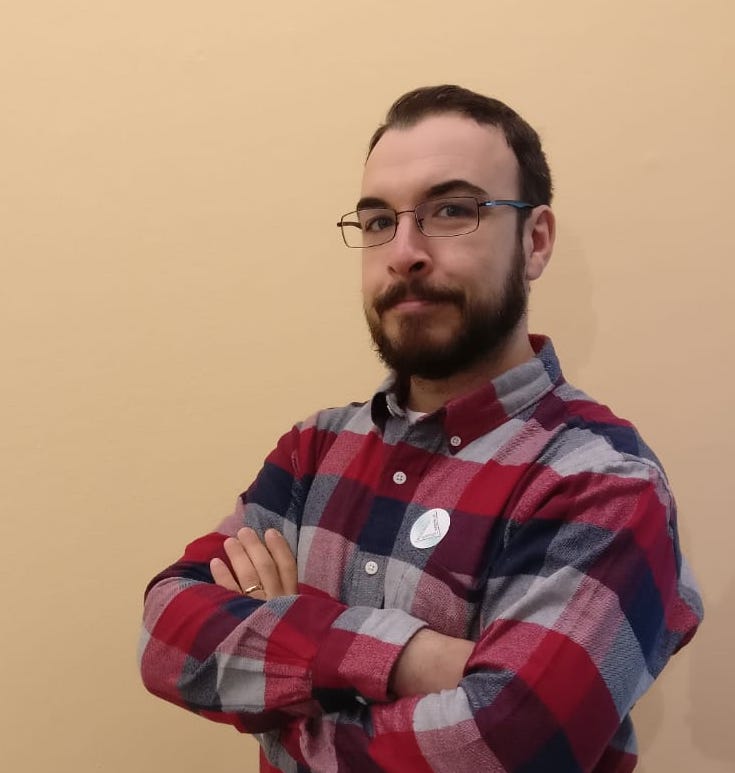There are two kinds of critics: those who are in favor of Ai Weiwei whatever he says and does, and then there are those who always disagree. I place myself in the middle but carrying a lot of questions. Looking at his latest solo show in Venice, La Commedia Umana-Memento Mori, I asked myself: “is he the definitive pop artist?”
It rains, rains and rains. When it rains, Venice has that soft light that cradles you and makes you feel sleepy on the vaporetto that gets you around the lagoon; I was almost falling asleep, but, luckily, I got off in time on the island of San Giorgio. “What am I doing here?” I wonder looking at the huge poster that welcomes us to the great exhibition in Venice by Ai Weiwei. The answer is: “since the dissident and activist Chinese artist has always left me with some doubts, I am here to understand something more, so not to always seem the contrarian on the topic”.
Thus, I enter the abbey of San Giorgio Maggiore, together with me there are tourist groups that exclaim in unison: “whoa!”; while I am there trying to understand how he came up with the idea of creating such a complex work in Murano glass and placing it mid-air. It has something spectacular and, at the same time, fabulous.
Proceeding I arrive in some rooms of the abbey where I enter in the exhibition’s heart; the first on the left welcomes me with a huge, fat and beautiful fish. A little further on there are works that recall Chinese food packages complete with chopsticks, everything is made of glass. Retracing my steps in the large corridor, I find the Lego artworks that have been acclaimed so much and, in fact, they have something exciting, that enthusiasm that one has from an early age to see the Danish bricks. There are several Lego-themed pieces throughout the show, and almost all of them reproduce great works from modern or contemporary art, until it is the very same work by Ai Weiwei that comes to life in the brick format.
The exhibition is enjoyable, there are rooms with large works and smaller sections, such as the one that houses the Chinese zodiac. These rooms seem more intimate and divide the stage with works made of glass in an amusing alternation.
While observing the works I approach the immense tree inside a room behind the abbey, and I stay there for a few minutes to reflect. The solo show, curated by Ai Weiwei himself, Adriano Berengo and Carmelo A. Grasso, director of the Abbey of San Giorgio Maggiore – Benedicti Claustra Onlus, has something of the anthological exhibition and, at the same time, of the solo show; I have the feeling that the Chinese artist is moving away from the image he has created in the last years, in order to move towards a kind of absolute. Throughout the entire exhibition I perceived Ai Weiwei’s immense knowledge of Western art and the excellent art of the Berengo Studio artisans in the creation of the glass works, which are divine so much they are perfect. However, from the beginning I asked myself: “Where is he going?”
In general, it is a pleasant exhibition, as I said before, but it is just as pop. Understanding here “pop” in the most encyclopedic sense of the term, there is no work that the viewer cannot fail to recognize, whether he, or she, knows the artist or not. For a few minutes I thought about those Pop Art exhibitions, the blockbuster one so to speak, and I realized that I was in one of them, yes, in a pop exhibition. Terribly pop and wonderful at the same time.
I am not an Ai Weiwei’s fan, but without any doubt in Venice he has shown to the ones like me, that in the end he is an artist and as such he can do and undo whenever he likes. Perhaps his art is committed most of the times, but here in the lagoon he has made it light and captivating like a distant melody that asks for attention. Bravo Ai Weiwei, I never thought you would be able to like me so much.
Francesco Liggieri
Info:
Ai Weiwei, La Commedia Umana – Memento Mori
curated by Ai Weiwei, Adriano Berengo e Carmelo A. Grasso
28/08 – 27/11/2022
Fondazione Berengo
Abbazia di San Giorgio Maggiore, Isola di San Giorgio Maggiore, 30124, Venezia
www.fondazioneberengo.org
 Ai Weiwei, Tang Horse with a Broken Leg, 2022, detail. Murano glass. Ph. Francesco Allegretto, courtesy Fondazione Berengo and the artist
Ai Weiwei, Tang Horse with a Broken Leg, 2022, detail. Murano glass. Ph. Francesco Allegretto, courtesy Fondazione Berengo and the artist
 Ai Weiwei, Untitled (fish), 2022. Murano glass. Ph. Francesco Allegretto, courtesy Fondazione Berengo and the artist
Ai Weiwei, Untitled (fish), 2022. Murano glass. Ph. Francesco Allegretto, courtesy Fondazione Berengo and the artist
 Ai Weiwei, La Commedia Umana – Memento Mori, 2022, installation view. Ph. Francesco Allegretto, courtesy Fondazione Berengo and the artist
Ai Weiwei, La Commedia Umana – Memento Mori, 2022, installation view. Ph. Francesco Allegretto, courtesy Fondazione Berengo and the artist
 Ai Weiwei, La Commedia Umana – Memento Mori, 2022, installation view. Ph. Savino Cancellara, courtesy Fondazione Berengo and the artist
Ai Weiwei, La Commedia Umana – Memento Mori, 2022, installation view. Ph. Savino Cancellara, courtesy Fondazione Berengo and the artist

Independent artist and curator. Founder of No Title Gallery in 2011. I observe, study, ask questions, take informations and live in contemporary art, a real stimulus for my research.






NO COMMENT